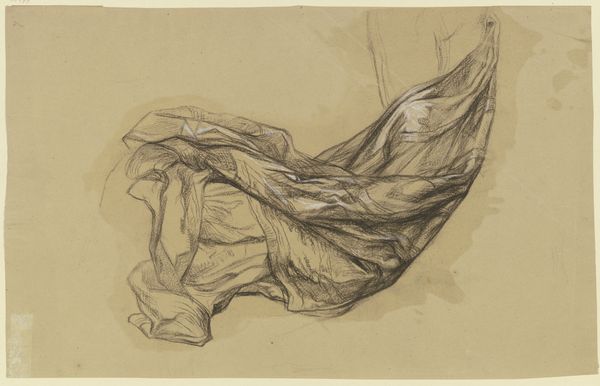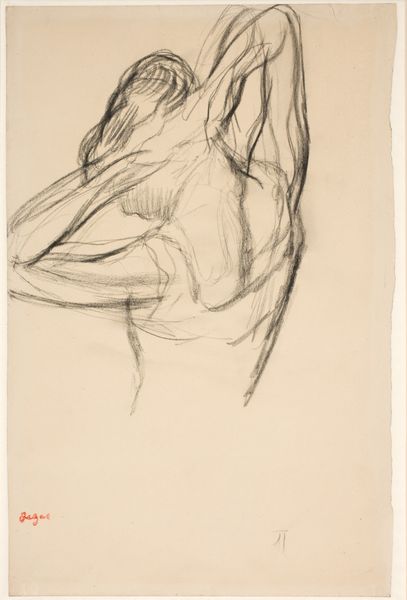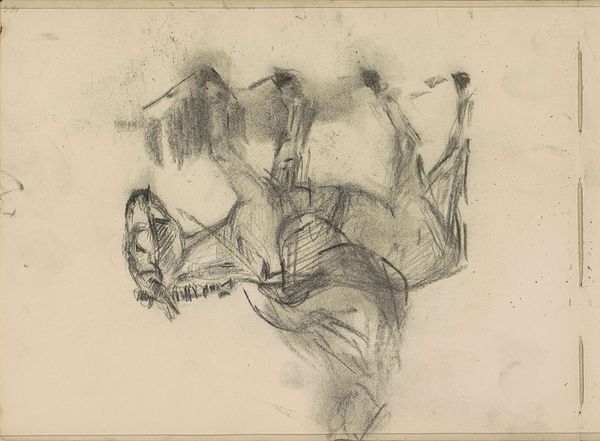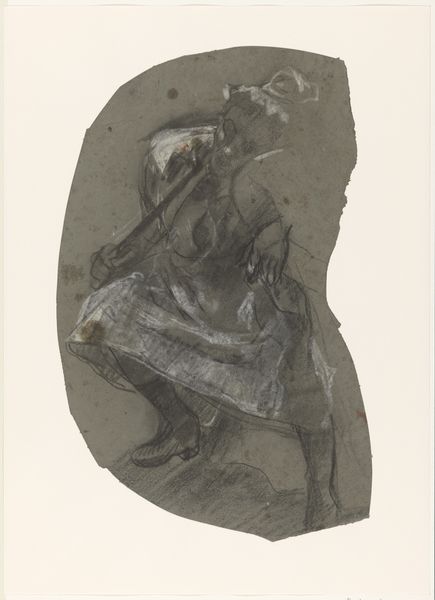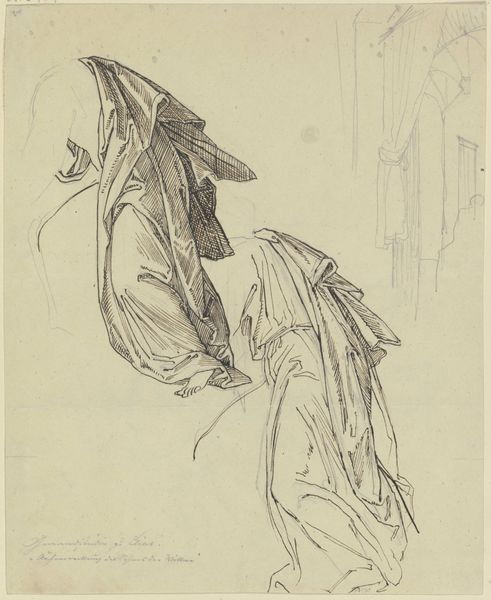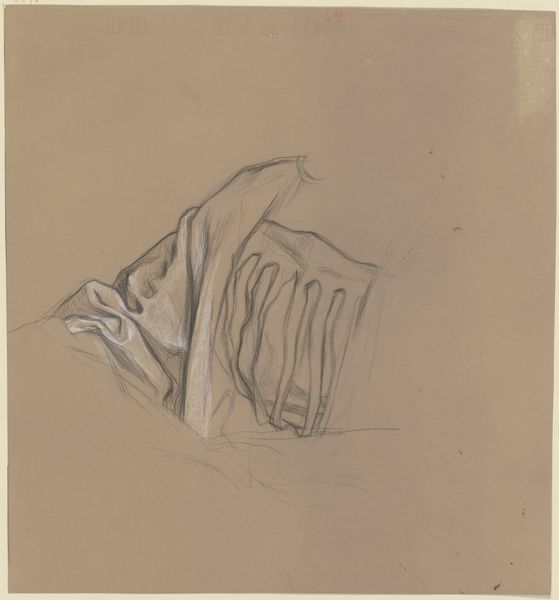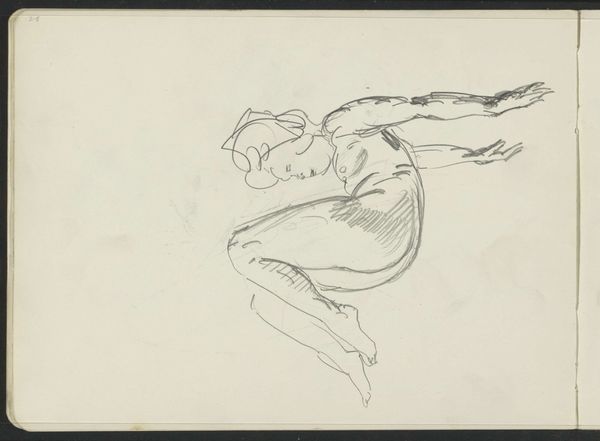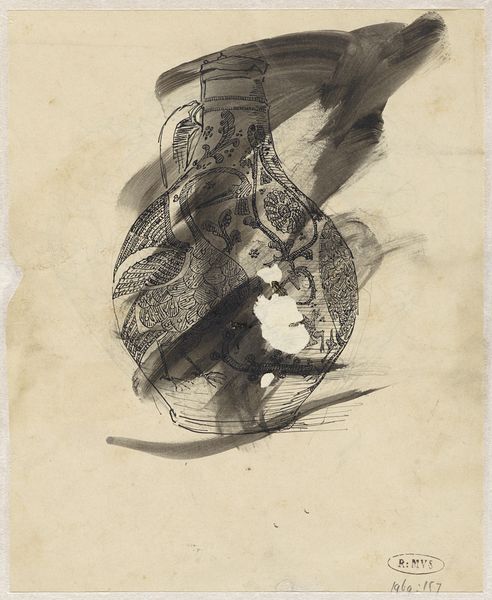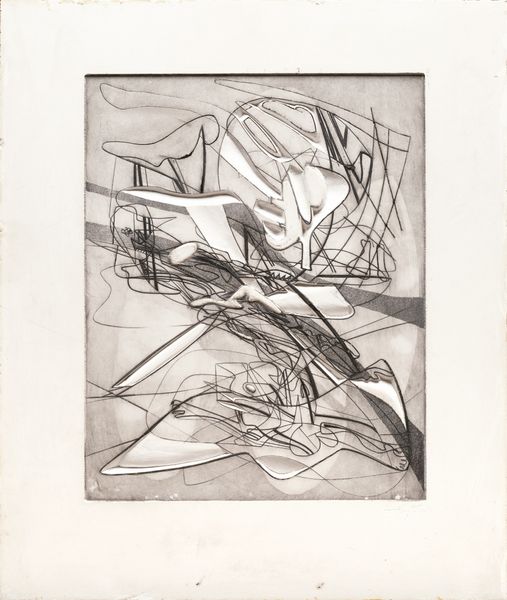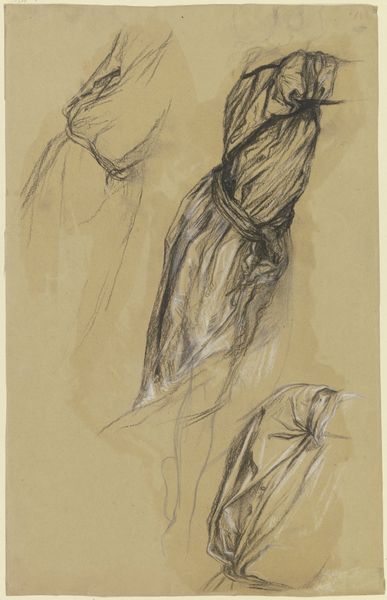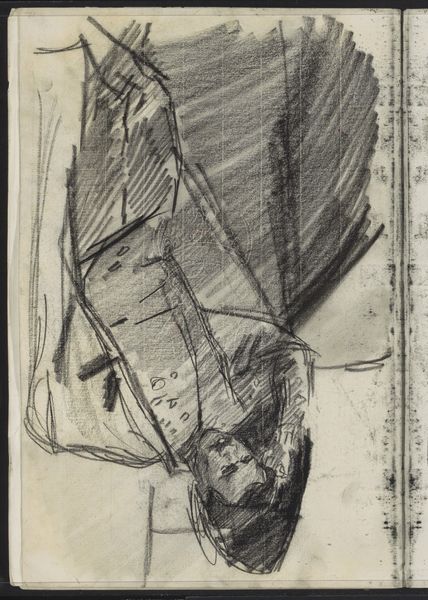
drawing, paper, pencil
#
drawing
#
pencil sketch
#
paper
#
form
#
pencil drawing
#
pencil
#
academic-art
Dimensions: sheet (irregular): 34.61 × 37.47 cm (13 5/8 × 14 3/4 in.)
Copyright: National Gallery of Art: CC0 1.0
Editor: So this is Elihu Vedder's "Study for 'Greek Girls Bathing,'" from around 1872. It’s a pencil drawing on paper, and the first thing that strikes me is how dynamic the drapery is, it looks almost windswept. What can you tell me about this piece? Curator: It's fascinating how a study of drapery can be so evocative. Vedder was part of the American expatriate art scene in Rome, grappling with classical themes in a rapidly changing world. This study, while seemingly just about form, raises questions about representation. Editor: Representation of what, exactly? Curator: Think about the title, "Greek Girls Bathing". Who gets to represent these women? Vedder, as a white male artist, is interpreting a scene rooted in antiquity, likely through a lens that reinforces certain power dynamics. What do you make of the way the artist captures the female figure, which is implied here, concealed beneath the drapery? Is it respectful, or does it contribute to the objectification of women, common in the male gaze in art of that time? Editor: I see your point. The figure is almost absent, existing only as a shape *under* the fabric. That feels... exploitative, in a way. Curator: Exactly. And it prompts us to question the context around Vedder's work. Was he intentionally engaging with the discourse of his time? Or simply perpetuating existing norms? We can consider, too, the societal constraints placed on women artists during this era and the limited opportunities they had to depict themselves, or other women, authentically. Editor: That's a powerful way to look at what I initially just saw as a simple drapery study. It definitely adds layers of complexity to the image and makes you think about the artist's perspective and who he's really representing. Curator: Precisely. It highlights how even seemingly benign works can reveal uncomfortable truths about history and representation and gender politics.
Comments
No comments
Be the first to comment and join the conversation on the ultimate creative platform.

